
Review Article
Austin J Lung Cancer Res. 2016; 1(2): 1006.
Lung Cancer Activity of Caralluma Species, an Overview
Devendar Reddy Kommidi*, Neil A Koorbanally and Brenda Moodley
School of Chemistry and Physics, University of KwaZulu- Natal, South Africa
*Corresponding author: Devendar Reddy Kommidi, School of Chemistry and Physics, University of KwaZulu- Natal, Westville, Durban, South Africa
Received: December 23, 2015; Accepted: January 28, 2016; Published: February 24, 2016
Abstract
Genus Caralluma a perineal herb of Asclepiadaceae family, it is used as traditional medicine for the treatment number of diseases like diabetes, inflammation, leprosy, obesity, rheumatism, diseases of the blood helminthic diseases, stomach disorders, abdominal pains, septics, chronic lung diseases, such as tuberculosis and cancer. We focus critical evaluation of genus Caralluma use in the lung cancer treatment in this review.
Keywords: Caralluma; NSCLC; SCLC; Radiotheraphy
Introduction
Lung cancer
Uncontrolled cell division that spreads throughout the body is cancer; it’s a group of diseases which can lead to death if not controlled. External factors (tobacco, infectious organisms, and unhealthy diet) and internal factors (inherited genetic mutations, hormones, and immune conditions) are the main causes of cancer. These i.e. external and internal may act composed or in order resulting cancer, it may pass a decade from exposure to detection of cancer. Among all types of cancers lung and breast cancers are most diagnosed and leading cause of deaths in men and women. WHO report states that the common causes of cancer deaths are cancers of lung (1.59 million deaths), liver (745 000 deaths), stomach (723 000 deaths), colorectal (694 000 deaths), breast (521 000 deaths), oesophageal cancer (400 000 deaths) [1]. Mainly cancer arises from the interaction of person’s genetic factors and three types of external factors like physical carcinogens (Ultraviolet and Ionizing radiation), chemical carcinogens (Tobacco, asbestos, smoke, aflatoxin, and arsenic) and biological carcinogens (virus, bacteria and parasites). The incidence of cancer is more in developed nations than less developed nations but mortality is more (65%) in less developed nations. Prostate cancer in men and lung cancer in women is leading death cause of cancer in more developed Nations, the burden of cancer is slowly shifting to less developed Nations due to the aging of the population and increasing pervasiveness. The genus Caralluma of Asclepiadaceae comprises of approximately 350 species all around the globe. Genus Caralluma normally prefers a dry habitat and decay when they are exposed to an excess of water. The support may be necessary, as they do not contain fibrous tissue. Some of the plants grow even up to a height of 100 cm under protection [2]. Review of literature revealed medicinal uses of genus Caralluma [3-9]. The distribution of Carallumas ranges from the Mediterranean to East Indies, mostly found in Southern Europe, Iran, Iraq, African countries like Kenya, Somalia, Sudan and Ethiopia, Arabian countries like Oman, UAE and Yemen and Asian countries like Afghanistan, Pakistan, India, Nepal, Burma and Sri Lanka [10].
Methodology
The data in the present review is retrieved from the published papers through online bibliographic databases: Google Scholar, ISI Web of Knowledge and Science Direct Navigator. There are a number of publications on caralluma but we considered the ones with lung cancer activity.
Types of Lung Cancer
Lung cancers are of three types, knowing the type of cancer really affects the treatment options and diagnosis.
Non-Small cell lung cancer
Non-Small Cell Lung Cancer is the most common type of lung cancer, among all lung cancers 85% of cases are Non-Small Cell Lung Cancers (NSCLC). NSCLC is further subdivided into Squamous Cell Carcinoma, adenocarcinoma and large cell carcinoma. The cells differ in size and shape and chemical makeup when looked under the microscope in these subtypes.
Squamous cell carcinoma: Squamous cell carcinoma is also known as epidermoid carcinoma; about 25-30% of NSCLC is squamous cell carcinoma. It starts in the flat squamous cell that is lined in the airways of the lungs, squamous cell carcinoma is often linked to smoking, and these are usually located in the large bronchi that join the trachea to the lung. A Continuous cough with blood, out of breath, fatigue, discomfort when swallowing, chest pain, fever, hoarseness, weight loss and poor appetite, are the common signs and symptoms. Individuals experience hypocalcaemia which results in muscle weakness; Obstruction of the airway may lead to pneumonia and atelectasis. Squamous Cell carcinoma can be diagnosed through chest CT scan, sputum cytology, brocho scopy, PET scan and Endobronchial Ultrasound.
Adenocarcinoma: Lung adenocarcinoma is mostly seen in women in particular below 45 years of age and especially in Asians, it may be in lungs before its detection and diagnosis. It usually begins in the tissue in the outer parts of the lungs, and it is often found in non-smokers. Early symptoms of the lung adenocarcinoma are fatigue, mild shortness of breath, in its later stages a chronic cough and coughing of up the blood can be seen, it is diagnosed by chest CT scan, sputum cytology, brochoscopy and PET scan.
Large cell carcinoma: Large cell carcinoma of lungs originates from the transformed epithelial cells, it’s a heterogeneous undifferentiated neoplasm, and it starts in the central part of the lung; this is usually discovered in the later stages. LCLC tend to grow quickly and of all lung cancers it comprises 5%-10%. The Previous history of smoking makes the LCLC more risky (2.3%) compared to nonsmokers. Cigarette smoking is the predominant reason for the LCLC.
WHO has further sub dived LCLC into Giantcell carcinoma, Basaloid large cell carcinoma, Clear cell carcinoma, Lymphoepithelioma-like carcinoma, Large-cell lung carcinoma with rhabdoid phenotype and Large cell neuroendocrine carcinoma; non-productive cough and weight loss are the signs and symptoms of the LCLC. This type of lung cancer may spread to nearby lymph nodes and chest wall. LCLC is diagnosed through CT, MRI and PET scans, biopsy and sputum cytology, apart for these tests thoracentesis, mediastinoscopy, needle biopsy, bronchoscopy, Video Assisted Thoracoscopic Surgery (VATS) and surgery is also done for the prognosis of LCLC. These subtypes of NSCLC are grouped together for the treatment and diagnosis are often same.
Small cell lung cancer
Small Cell Lung Cancer is a disease in which malignant cell form tissues of the lung. There are two types of small cell lung cancers; these two types include a much different type of cells the cancer cells of each type grow and spread in a different way. The sub types of SCLC are named after the cells found in cancer; these are Small Cell Carcinoma and Combined Small Cell carcinoma. Smokings, being exposed to second-hand smoke, family history with lung cancer, treated with radiotherapy for breast or chest cancer, exposure to asbestos, air pollution are the risk factors of SCLC. Chest discomfort, continuous cough, trouble in breathing, wheezing, and blood in sputum, hoarseness, trouble in swallowing, loss of appetite, weight loss, tiredness and swelling in the face or veins of the neck are the signs and symptoms of the SCLC.
Lung carcinoid tumour
Tumours are grown slowly and are rarely spread in lung carcinoid tumour; these are fewer than 5% in lung cancers. Lung carcinoid tumour is also known as neuroendocrine tumors. There are four types of tumours namely small cell lung cancer, large cell neuroendocrine carcinoma, atypical carcinoid tumour and typical carcinoid tumour. A Bloody cough, wheezing, shortness of breath and chest pain when taking deep breath. Lung carcinoid tumour can be diagnosed through Chest X-Ray, CT scan, Radionuclide scans, Sputum cytology, Biopsy, Bronchoscopy and biopsy Endobronchial Ultrasonography (EBUS) and biopsy, Needle biopsies, Surgical biopsies, Blood and Urine tests and Pulmonary function tests.
Treatments Available
There are different types of treatments are available for lung cancer, the type of treatment varies with the type of lung cancer.
Chemotherapy
Powerful medication to kill cancer is chemotherapy; it can be given in many ways. Chemotherapy is given before and after the surgery; medication before the surgery minimizes the size of a tumour and increases the success rate of surgery. On the other hand, the medication after the surgery to prevents the return of cancer. Chemotherapy also slows down the symptoms and prevents the spread. It is used in the treatment of small cell lung cancers; tumour usually spread to lymph nodes at the time of diagnosis in small cell lung cancers, so chemotherapy is used instead of surgery, chemotherapy is often combined with radiotherapy, and usually it is give in cycles.
Radiotherapy
Pulses of radiation are used to treat this type of treatment. Radical radiotherapy which is also known as intensive radiotherapy is used to treat patients suffering from non-small cell lung cancer those who cannot bare surgery. Stereotactic radiation is used for small tumours instead of surgery. Palliative radiotherapy is used to control symptoms and slowdown the spread of cancer, Prophylactic Cranial radiotherapy (PCI) is used to stop the spread of small cell lung cancer to the brain. Broadly there are three ways that radiotherapy is given namely, conventional external beam radiotherapy, stereotactic radiotherapy and internal radiotherapy.
Conventional external beam radiotherapy: In this type beams are directed to the affected parts of the body using a machine.
Stereotactic radiotherapy: In this type accurate high energy beams are used to deliver the higher dose of radiation to the tumour. Surrounding healthy tissue is spared as much as possible
Internal radiotherapy: Tumour affected area is treated by inserting a thin catheter (tube) consisting small amount of radioactive material. This thin tube is removed after some time. External radiotherapy is mostly used in the treatment of lung cancer.
Surgery
There are three types of surgeries to treat lung cancer namely, Lobectomy, Pneumonectomy, Segmentectomy
Shortcomings of the treatments available
Body’s reaction to the cancer treatment depends on various factors like, duration of the treatment, dosage and patients personal history. These side effects may be of short term or long term; mostly side effects are short term and are painful and uncomfortable. The possible side effects of the treatments available are blood clots, bone issues, chemo brain, dental issues, diarrhoea, fatigue, lymphedema, mouth sores, nausea and vomiting, neuropathy, pain rash and weight loss or gain.
Chemotherapy side effects: Drugs are given to control quick cell division in chemotherapy, but the cells of hair, skin, nails, sidelining of the digestive system and blood cells also divide quickly, so these cells also are affected by the chemotherapy. Some of the common side effects are low blood cell levels, fatigue, nausea, mouth ulcers and hair loss.
Radiotherapy side effects: A side effect of radiotherapy depends on the duration of the treatment, generally the treatment for few weeks usually give more side effects than treatment for few days. General side effects of radiotherapy are tiredness, sore throat, cough, hair loss, chest pain, temperature and shivering, feeling sick and sore skin in the treatment area. Long-term side effects may develop after the completion of the prolonged treatment this is because of fibrosis; fibrous tissue is less stretchy than normal tissue so breathlessness, difficulty in swallowing and heart problems may develop. Radiotherapy to control symptoms is unlikely to develop side effects.
Advantages of traditional medicine for the lung cancer
Plants or mixture of plant extracts are used in herbal or traditional medicine, this is a whole approach which includes physical, mental and emotional wellbeing of the patients, it restores patients’ body ability to protect and regulate itself. There are different types of traditional approaches for the lung cancer treatment namely, Western herbal medicine, Chinese herbal medicine, Tibetan herbal medicine and Ayurvedic medicine (Indian). The survival rate of the standard treatments tending the patients to go for the traditional medicine [11]. Western herbal medicine concentrates on the person (family history, diet and lifestyle) rather than illness, Chinese herbal system is called Traditional Chinese Medicine (TCM), this aims to restore the flow of energy into the body that is known as QI (Chee). TCM includes herbal medicine, acupuncture, massage therapy, traditional breathing and movement exercise called qi gong (Pronounced as Chee gong) and movement exercise called tai chi (pronounced as tie chee). In TCM along with plant material minerals and animal products are also being used [11]. The present review concentrates on Indian traditional medicine (Ayurveda) limiting to genus Caralluma. Ayurveda is the ancient Indian system of medicine which makes use of inherent power of herbs, few herbs like curcuma longa, Withania somnifera, Giloy, Commiphora Mukul, Bambusa arudinasea, Piper longum, Vasaka and Ocimum tenuiflorum are used in the cancer treatment [12] (Figure 1-4).
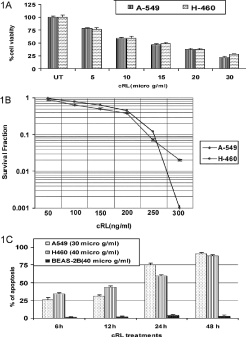
Figure 1: (A) Effect of cRL on lung cancer cell lines. The lung cancer cell
lines A-549 and H-460 were treated with different concentrations of cRL for
24 h, and the cell viability was measured by MTT assay. Each data point
represents the mean for four wells from three independent experiments
(mean ± S.E.). (B) cRL-induced clonogenic inhibition in lung cancer cells.
Lung cancer cells treated with different concentrations of cRL (0–300 ng/ml)
and clonogenic inhibition assays were performed in these cells. Cell survival
curve of lung cancer cells with treatments as assayed by colony forming
ability. The data shown are representative of the combined mean of three
independent experiments. (C) cRL-induced apoptosis in lung cancer cell
lines. Cells were treated with either 30μg/ml (A-549) or 40μg/ml (H-460 or
BEAS-2B) of cRL dissolved in DMSO and apoptotic assays were performed
at 6, 12, 24 and 48 h. Bar graph shows the percentage of apoptotic cells. The
base-line apoptosis in the untreated group was normalised with data on the
treated group. Each data point represents the mean of three independent
xperiments (mean±S.E.) (Rama S Ranga et al).
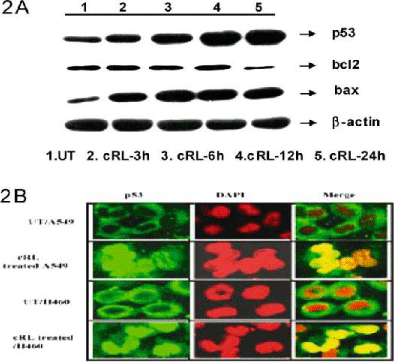
Figure 2: (A) Regulation of apoptotic gene expression by cRL. Whole cell
protein extracts were prepared from A-549 cells that were either left untreated
or treated with cRL for the time intervals indicated. The blot was probed with
antibodies for p53, Bcl-2, Bax and β-actin. (B) Effect of cRL on the localization
of p53 in lung cancer cell lines. Indirect immunofluorescence analysis for p53
in A-549 and H-460 lung cancer cell lines following 24 h treatment with cRL.
The superimposed images show the cells undergoing apoptosis (Rama S
Ranga et al).

Figure 3: (A) Radio-sensitisation effect of cRL on lung cancer cell lines. The
cells (A-549 and H-460) were treated either with radiation alone or radiation in
combination with various concentrations of cRL for 24 h, and the cell viability
was measured by MTT assay. Each data point represents the mean for four
wells from three independent experiments (mean ± S.E.). Enhancement of
radiation-induced apoptosis in lung cancer cells by cRL. (B) A-549; (C) H-460.
Cells were treated with radiation alone (5 Gy) or radiation combined with cRL
(A-549; 15μg/ml; H-460; 20μg/ml) and apoptotic assay was performed after
24 h of exposure. Each data point represents the mean of three independent
experiments (mean ± S.E.) (Rama S Ranga et al).

Figure 4: Induction of caspase-3 activation in lung cancer cell lines. (A)
A-549; (B) H-460. Cells were left untreated or treated with cRL, radiation or
the two in combination and caspase activity was determined after 3, 6, 12
and 24 h. Caspase activities are expressed as the percentage of caspase
activity as compared to control and presented as mean ± S.E. of two samples
in triplicates (Rama S. Ranga et al).
Caralluma for the Treatment of Lung Cancer
Genus Caralluma reported to have many medicinal uses; here we discuss the use of caralluma species for the lung cancer treatment. C. negevensis is reported to be useful in the chronic lung disease like cancer in Spain. Among the twenty new pregnane glycosides isolated, compound seven reported to exhibiting anti-lung cancer activity [13]. Methanolic extract of the C.fimbriata wall. Reported to exhibit antilung cancer activity, Priya and his co-workers carried out cell viability and growth inhibition activity of the methanolic extract of C.fimbriata Wall against A-549 lung cancer cell lines. Cytotoxic activity was determined by Cell viability and cell morphology was observed under the inverted microscope. The methanolic extract decreased the cell viability and increased growth inhibition, results demonstrated that the methanolic extract of C.fimbriata had potential agent against lung cancer, MTT assay was used for the anticancer activity of the methanolic extract. [Rajaram] (Figure 5-12).
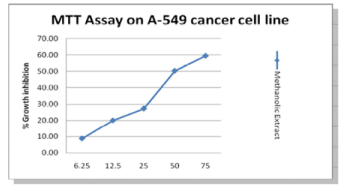
Figure 5: Concentration of Methanolic Extraxt on X-axis (μg/ml).
MTT assay on A-549 cancer cell line on Y axis (Priya et al.).
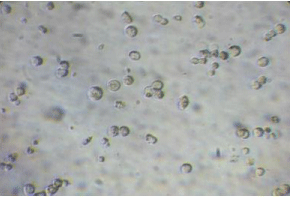
Figure 6: A-549 treated with 6.25μg/ml of Methanolic extract of C. fimbriata
(Priya et al.).
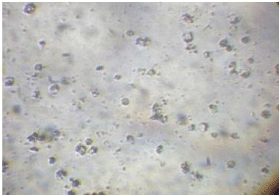
Figure 7: A-549 treated with 12.5μg/ml of methanolic extract of C.fimbriata
(Priya et al.).

Figure 8: A-549 treated with 25μg/ml of extract. A-549 treated with 50μg/ml
of extract (Priya et al.).
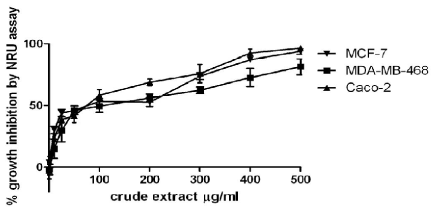
Figure 9: Treatment of cells for 24 hours with the crude extract of Caralluma
tuberculata over a range of concentrations. Cell growth was measured using
the NRU assay (Abdul Waheed et al).
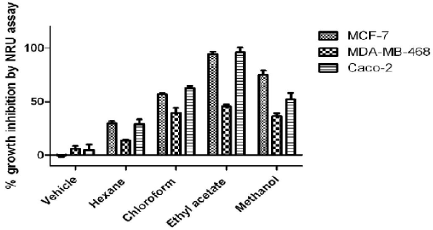
Figure 10: Treatment of cancer cells for 48 hours with specific organic
fractions of Caralluma tuberculata at 200 μg/ml. Cell growth was measured
using the NRU assay (Abdul Waheed et al).
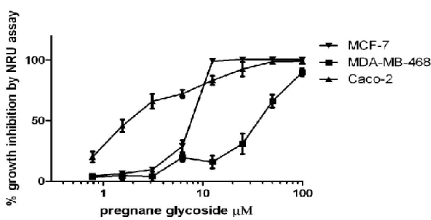
Figure 11: Treatment of cancer cells for 48 hours pregnane glycoside over a
concentration range. Cell growth was measured using the NRU assay (Abdul
Waheed et al).
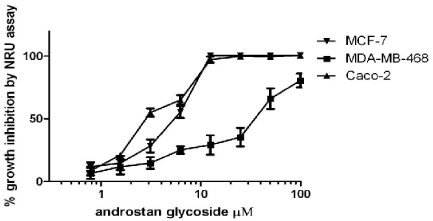
Figure 12: Treatment of cancer cells for 48 hours androstan glycoside over a
concentration range. Cell growth was measured using the NRU assay (Abdul
Waheed et al).
Concluding Remarks and Perspectives
Finally it is concluded that genus caralluma can be used as alternative medicine in the treatment of lung cancer as most of the present treatments have side effects, establishment of signalling pathway for the lung cancer treatment using caralluma is encouraged. The alternative medicine can be used effectively if proper research is done so the research in this direction is encouraging.
Acknowledgement
The authors are grateful to the School of Chemistry and Physics, College of Agriculture, Engineering and Science, University of KwaZulu-Natal, Westville, Durban, South Africa for funding and research facilities.
References
- Torre LA, Bray F, Siegel RL, Ferlay J, Lortet-Tieulent J, Jemal A. Global cancer statistics, 2012. CA Cancer J Clin. 2015; 65: 87-108.
- Gandhi R. Carallumas of the Indian sub-continent. Indian Society of Cacti & Succulents. New Delhi. 1999.
- Chopra RN, Nayar SL, Chopra IC. Glossary of Indian Medicinal Plants. CSIR, New Delhi. 1956.
- Akhtar MS. Hypoglycaemic activities of some indigenous medicinal plants traditionally used as antidiabetic drugs. J Pak Med Assoc. 1992; 42: 271-277.
- Leporatti ML, Lattanzi E. Traditional phytotherapy of coastal areas of Makran (Southern Pakistan). Fitoterapia. 1994; 65: 158–161.
- Wadood A, Wadood N, Shah SA. Effects of Acacia arabica and Caralluma edulis on blood glucose levels of normal and alloxan diabetic rabbits. J Pak Med Assoc. 1989; 39: 208-212.
- Vedavathy S, Mridula V, Sudhakar A. Tribal medicine of chittor district of Andhra Pradesh, India. I Ed. Tirupati. Herbal Folklore Research Centre. 1997; 46.
- Abdul-Aziz Al-Yahya M, Abdel-Sattar E, Guittet E. Pregnane glycosides from Caralluma russeliana. J Nat Prod. 2000; 63: 1451-1453.
- Braca A, Bader A, Morelli I, Scarpato R, Turchi G, Pizza C, et al. New pregnane glycosides from Caralluma negevensis. Tetrahedron. 2002; 58: 5837–5848.
- Meve U, Liede S. A molecular phylogeny and generic rearrangement of the stapelioid ceropegieae (Apocynaceae – Asclepiadaceae). Plant Syst. Evol. 2002; 234: 171- 209.
- Misha Ruth Cohen. Complementary and Alternative Medicine and Chinese Medicine in Lung Cancer. Caring ambassador System. 2014; 9: 123-134.
- Katiyar C, Gupta A, Kanjilal S, Katiyar S. Drug discovery from plant sources: An integrated approach. Ayu. 2012; 33: 10-19.
- Adnan M, Jan S, Mussarat S, Tariq A, Begum S, Afroz A, et al. A review on ethnobotany, phytochemistry and pharmacology of plant genus Caralluma R. Br. J Pharm Pharmacol. 2014; 66: 1351-1368.